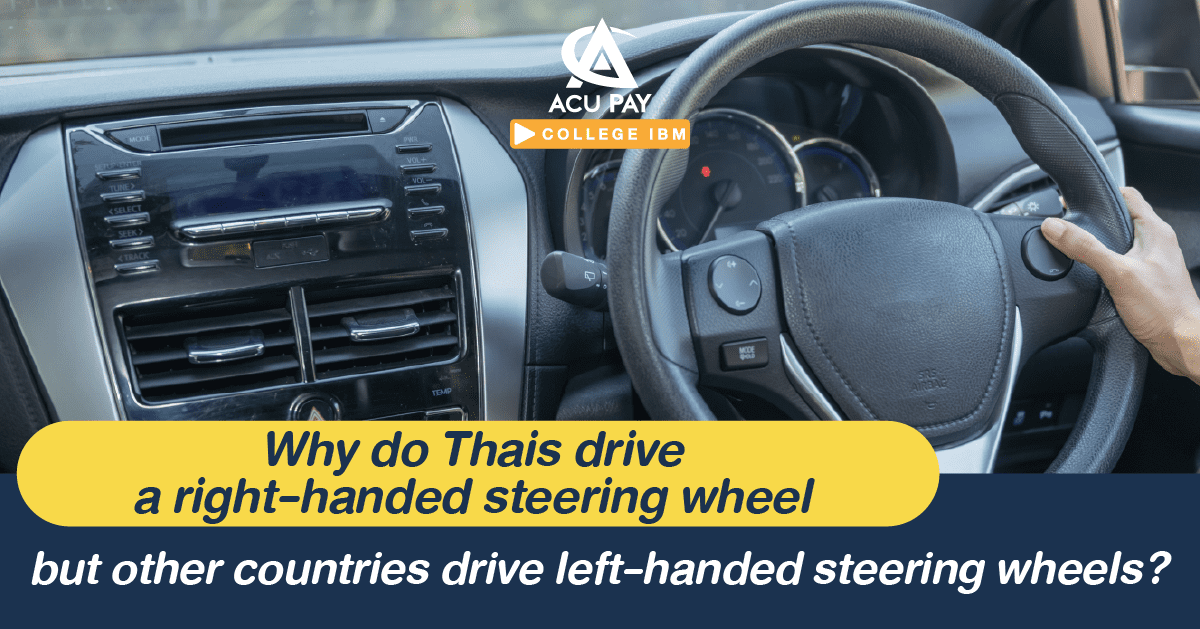

When you travel abroad, have you ever noticed that the steering wheels of the cars in each country are different? This is quite confusing for people who drive due to the differences of the road. What are the reasons why steering wheels are on the left and on the right side of a car? Why don’t we make steering wheels on the same side for every car? Let’s find out with ACU PAY today!
First, let’s get to know the traffic patterns. There are two types: Left-Hand traffic in which the steering wheel is on the right, and Right-Hand traffic in which the steering wheel is on the left.
Back in an ancient time when most knights were right-handed, they often kept to the left of the road for convenience when they held their swords in their right hands fighting with enemies. This is the beginning of Left-Hand traffic.
Yet, the turning point of traffic began during the French Revolution. Napoleon ordered the villagers to move to right-hand traffic instead so that he could fight against the enemy by swinging a sword with his left hand. The change of this rule has affected other countries that France has occupied and have been in use until now. On the other hand, English still use the left-hand traffic as before.
France’s ruled territory will have right-hand traffic. The British-ruled territory will have left-hand traffic. Later, each country changed its direction to match the neighboring countries depending on the location and culture of each area. As a result, many areas with right-hand traffic will become new systems and some areas remain left-handed according to the old system.
Since England was the first country to start driving cars on the left side and it was a colonial era that needed independence. After America had fought until it gained independence from England, America changed its traffic patterns. When automobile production took place, Henry Ford, the founder of Ford, changed its driving tradition by creating a Model T with a steering wheel on the left, which meant drivers had to switch from using the left traffic lane to the right traffic lane for passengers to get off on the sidewalk. Neighboring countries have also changed their driving pattern according to the United States, including Canada, Spain, Eastern Europe, and Scandinavia.
The reason why Thailand is familiar with the right-handed steering wheel and keeps to the left while driving is because Thailand has had diplomatic relations with Britain since 1826 by using Thailand as a shortcut to trade with India. As a result, Thailand is driving on the right-hand wheel, which is on the opposite side of neighboring countries such as Myanmar, Laos, and Cambodia. Only Malaysia is driving on the same side as Thailand.
Driving with the right-handed steering wheel accounts for only 10 percent of global car sales. Large markets such as China, America, Europe, and the Middle East are mostly using left-handed steering wheel cars.
The countries that use right-hand traffic are England, Scotland, Ireland, Japan, Indonesia, Malaysia, Singapore, Australia, New Zealand, South Africa, Bangladesh, Sri Lanka, Botswana, Zimbabwe, Mozambique, Swaziland, Pakistan, Kenya, and Tanzania.
The idea of changing the steering wheel from left to right is not easy as engineers have to calculate weight transfer, lower setups and more to achieve the same performance as possible.